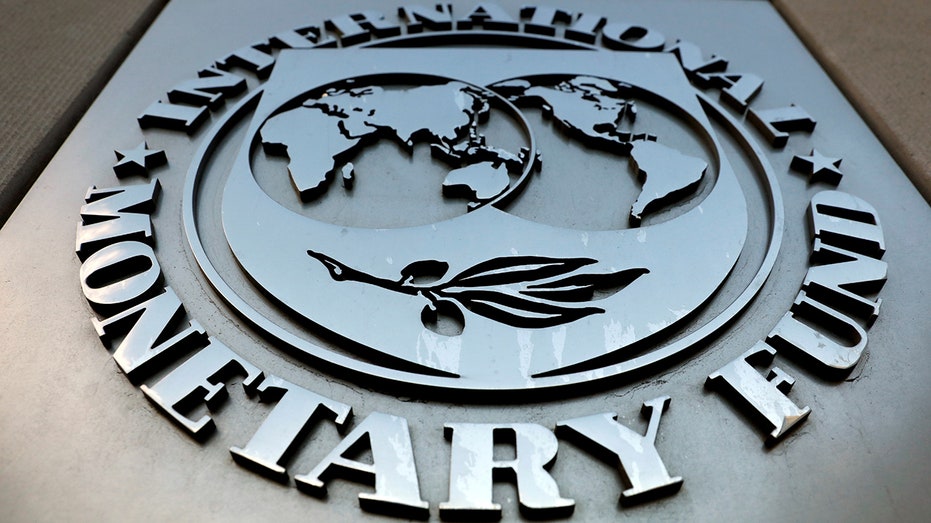US, China to lead growth in government debts
Aging populations, climate measures and interest payments add to government spending
Democrats are 'blind as always' with debt ceiling proposal: Rep. Ryan Zinke
Rep. Ryan Zinke, R-Mont., recaps a hearing on China’s influence over critical minerals and discusses the continued debate over the debt ceiling on ‘Varney & Co.’
The governments of major economies—particularly the U.S. and China—are projected to boost their borrowing in coming years as they spend more on aging populations and a shift to clean energy, the International Monetary Fund said.
Worldwide government debt declined briefly with the end of costly pandemic-related measures, but it is expected to start climbing again this year and keep rising over the coming five years, the IMF said in its Fiscal Monitor report released Wednesday.
The projected rise also partly reflects high interest payments on debt, following central banks’ interest-rate increases to combat high inflation.
IMF economists cautioned that expanding government borrowing and spending could fan inflationary pressures, undercutting the central banks’ efforts.

FILE PHOTO: The International Monetary Fund (IMF) logo is seen outside the headquarters building in Washington, U.S. REUTERS/Yuri Gripas/File Photo (REUTERS/Yuri Gripas/File Photo / Reuters Photos)
IMF TRIMS GLOBAL GROWTH OUTLOOK AS BANKING TURMOIL RAISES RISK OF HARD LANDING
"There is now for most countries a strong case for fiscal tightening," said Vitor Gaspar, director of the IMF’s fiscal affairs department, referring to measures such as spending cuts or tax increases. "Tightening fiscal policy contributes to reducing aggregate demand. It diminishes inflation pressure, which forces the central bank to increase interest rates."
The IMF forecasts general government debt worldwide—which includes borrowing by central and local governments and government-owned institutions—to come to an amount equivalent to 93.3% of global gross domestic product this year before rising gradually to 99.6% in 2028. The debt-to-GDP ratio was 82.8% in 2018 and hit a recent peak of 99.7% in 2020.
"The United States and China contribute most to this trend," Mr. Gaspar said. "If one would exclude the United States and China, the public debt-to-GDP ratio would be going down" globally, he said.
The U.S. government debt is projected to keep rising in coming years partly because Washington is spending more for healthcare and Social Security costs as the baby boomers retire, as well as for clean energy projects and other domestic economic policies, IMF economists say.

A Social Security card is displayed. ((AP Photo/Jenny Kane, File) / AP Newsroom)
YELLEN SAYS GLOBAL ECONOMY IS IN A 'BETTER PLACE' THAN EXPECTED, DESPITE BANKING UPHEAVAL
The IMF forecast comes as Washington remains embroiled in a fight over the debt ceiling, the federal government’s $31.4 trillion borrowing limit. The federal government could run out of money to pay all its bills if Congress doesn’t vote to raise the debt ceiling in coming months. The White House is pushing Congress to do so without conditions, while Republican lawmakers are seeking spending cuts before agreeing to do so.
U.S. gross general government debt is expected to rise to 136.2% of GDP in 2028, up from 107.4% in 2018 and higher than the pandemic-era peak of 133.5% in 2020, according to the IMF. The debt-to-GDP ratio is projected at 122.2% this year, just slightly above 121.7% in 2022.
China, the world’s second-largest economy, is another with fast-rising government debt. The IMF expects it to rise to 104.9% of GDP in 2028, from 82.4% for 2023 and 56.7% in 2018.

The American and Chinese flags wave. (AP Photo/Kiichiro Sato, File) (AP Photo/Kiichiro Sato, File / AP Newsroom)
China’s spending on its rapidly aging population and stimulus measures to sustain economic growth are among the factors behind its climbing debt, IMF economists say.
U.S. government debt is rising faster than the average for advanced economies, which is projected to rise to 117.8% in 2028 from 112.4% in 2023.
CLICK HERE TO READ MORE ON FOX BUSINESS
The U.S. debt-to-GDP ratio is higher than those of wealthy European nations such as Germany, France and the U.K., but well below that of Japan, a country that has borrowed heavily to support its aging population. Japan’s general government debt-to-GDP is seen hitting 258% this year and 264% in 2028, the IMF said.
Government debt levels in major countries could exceed the latest projections for several reasons, IMF economists say. One is increased military spending amid geopolitical tensions. Another is increases in government subsidies and other measures to beef up domestic industries as nations compete with each other economically.




















